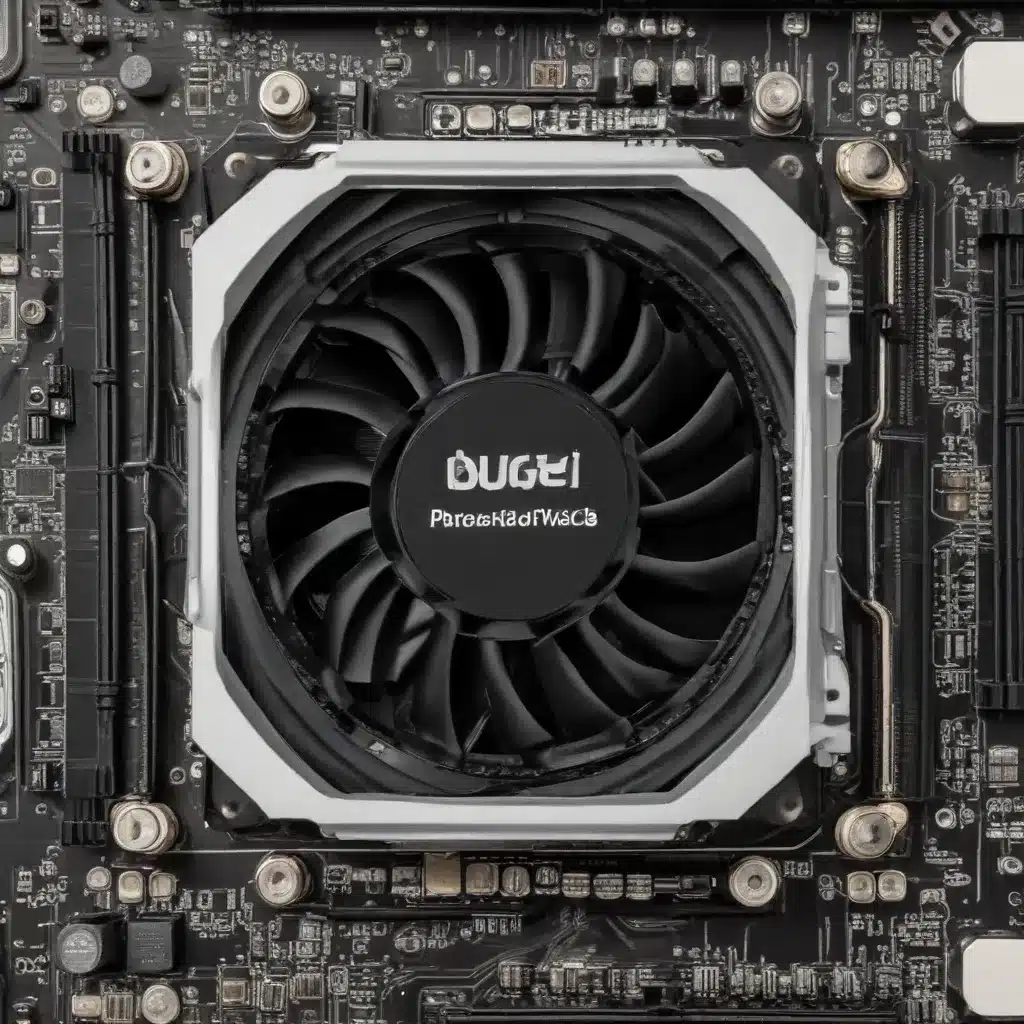
In the fast-paced world of modern computing, ensuring optimal hardware performance is crucial. One often overlooked, yet vital, aspect of maintaining your system’s health is the proper management of thermal interface materials (TIMs), particularly the thermal paste that sits between your GPU and its heatsink. Inadequate or degraded thermal paste can lead to overheating issues, throttling, and even permanent damage to your precious graphics card.
Hardware Components
Computer Processors
At the heart of any high-performance PC or gaming console are two key components: the Central Processing Unit (CPU) and the Graphics Processing Unit (GPU). Both of these chips generate significant amounts of heat during operation, which must be efficiently dissipated to maintain optimal performance and prevent system failures.
Thermal Management
To manage the heat generated by these processors, computer hardware utilizes a variety of cooling solutions, including heatsinks and cooling fans. These components work together to draw heat away from the CPU and GPU, ensuring they can operate at their peak without overheating.
The thermal interface material (TIM) plays a critical role in this thermal management system. This specialized paste, often referred to as “thermal paste” or “thermal compound,” acts as a bridge between the processor’s integrated heat spreader (IHS) and the heatsink, facilitating efficient heat transfer.
Thermal Paste
Thermal Paste Composition
Thermal pastes come in a variety of formulations, each with its own unique properties and characteristics. The two most common types are metallic thermal pastes and silicone-based thermal pastes.
Metallic thermal pastes, such as those containing silver or aluminum, are known for their excellent thermal conductivity, allowing for rapid heat dissipation. However, they can be more electrically conductive, posing a risk of short circuits if applied improperly.
Silicone-based thermal pastes, on the other hand, are generally less thermally conductive but offer better insulating properties, making them a safer choice for those concerned about electrical conductivity.
Thermal Paste Application
Applying thermal paste correctly is crucial for ensuring optimal heat transfer between the processor and the heatsink. Proper techniques include using a small, pea-sized amount of paste and gently spreading it across the surface of the IHS using a clean, non-abrasive tool, such as a credit card or a specialized spreader.
Careful attention must be paid to the paste’s coverage and thickness, as too much or too little can negatively impact the thermal performance. Uneven application or air bubbles trapped within the paste can also lead to hot spots and reduced cooling efficiency.
GPU Cooling
GPU Cooling Systems
Graphics cards, like their CPU counterparts, require effective cooling solutions to prevent overheating and maintain peak performance. Two common cooling approaches for GPUs are air cooling and liquid cooling.
Air cooling systems utilize a combination of heatsinks and fans to dissipate heat from the GPU, while liquid cooling systems circulate a coolant fluid through a closed-loop system to transfer heat away from the GPU.
GPU Temperature Monitoring
Monitoring GPU temperatures is crucial for identifying potential thermal issues and maintaining optimal system performance. Most modern graphics cards come equipped with temperature sensors that can be accessed through specialized software, such as GPU-Z or MSI Afterburner.
These tools allow users to track GPU temperatures, including the core temperature and the “hot spot” temperature, which can provide valuable insights into the overall thermal health of the graphics card.
Troubleshooting and Maintenance
Identifying Thermal Issues
Symptoms of thermal problems on a GPU can include sudden performance drops, system crashes, or even unexpected shutdowns. In severe cases, the GPU may exhibit visual artifacts, such as flickering or distorted graphics.
It’s important to note that GPU temperature thresholds can vary depending on the specific model and manufacturer. As a general guideline, GPU core temperatures above 80°C (176°F) may indicate the need for intervention, while temperatures exceeding 90°C (194°F) are considered critical and require immediate attention.
Thermal Paste Replacement
If you suspect that your GPU is experiencing thermal issues, the first step in troubleshooting is to examine the condition of the existing thermal paste. Over time, this material can degrade, becoming dry, cracked, or unevenly distributed, resulting in reduced heat transfer efficiency.
To address this problem, you’ll need to carefully remove the old thermal paste and apply a fresh layer. This process typically involves the following steps:
-
Disconnect and Disassemble: Safely power down your system, disconnect the graphics card, and remove any necessary components to access the GPU heatsink.
-
Clean the Surfaces: Use a clean, lint-free cloth and a small amount of isopropyl alcohol to thoroughly clean the GPU’s integrated heat spreader and the corresponding surface of the heatsink. Ensure that all traces of the old thermal paste are removed.
-
Apply New Thermal Paste: Carefully apply a small, pea-sized amount of fresh thermal paste to the center of the GPU’s IHS, then gently spread it evenly across the surface using a clean, non-abrasive tool.
-
Reassemble and Test: Carefully replace the heatsink and secure it in place, ensuring a proper, even contact with the GPU. Reassemble your system and power it on, monitoring the GPU temperatures to ensure they have improved.
By taking the time to replace the thermal paste on your GPU, you can often resolve overheating issues and restore your system to optimal performance. Remember, a well-maintained and properly cooled GPU is the key to enjoying a smooth, lag-free gaming experience or handling resource-intensive workloads with ease.
If you’re unsure about the process or encounter any difficulties, it’s always best to consult with a qualified IT professional or refer to your graphics card manufacturer’s instructions for guidance. With the right knowledge and a little bit of care, you can keep your GPU running cool and efficient for years to come.












